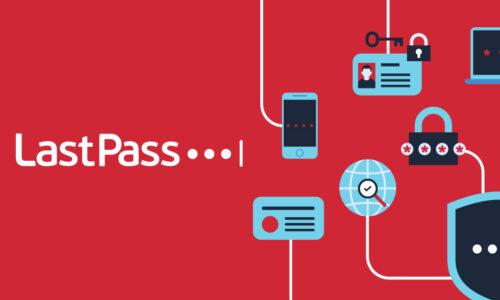Why Is Wi-Fi Password Sharing Important?
Protecting your network from unauthorized access
The same aspects that make free public Wi-Fi appealing to consumers are the same ones that apply to hackers. Since it requires no authentication, a hacker can easily access multiple insecure devices on the network. A hacker can position himself between you and the connection so that you’re conveying information directly to the hacker. When hackers can access that information, they can also use social engineering techniques to act as if they were you. They can also infect your system with malware and spread it through file-sharing.
Sharing your Wi-Fi password ensures that only trustworthy parties can access and use your private network. According to Forbes, a significant advantage of a private network is that data doesn’t have to travel as much as it would for a public network. Containment means less latency and better speed, privacy, and performance.
Organizations in industries like healthcare, manufacturing, transportation, and logistics benefit the most from private networks. They transmit large volumes of data for mission-critical tasks. For example, a healthcare organization can designate certain devices to receive life-saving information faster than other connected devices on the network. A manufacturing organization can improve its communication with latency-sensitive production lines and rely less on back-office systems. Unsurprisingly, three-fourths of manufacturers planned to implement private 5G networks this year.
Conveniently sharing Wi-Fi access with guests
Let’s face it: public Wi-Fi just isn’t as reliable. The internet connection may be spotty, especially if your device is out of range. Your data is more vulnerable to exposure, and your systems are more susceptible to malware and cyber-attacks. Therefore, subjecting visitors to an insecure, potentially lower-quality web browsing experience is inadvisable. If you learn how to share your Wi-Fi password with guests, you improve their experience with your organization.
Maintaining control over your network
Private, password-protected networks allow organizations to control their network and bandwidth. You can manage user access, visibility, performance, and security. Given the proliferation of IoT and smart devices, companies will need private networks for connectivity without interference or performance dips.
How to Share Wi-Fi Passwords: Methods
Using LastPass to securely share passwords
According to Security.org, cybercrime racked up over $10 billion in damages over the past couple of years. Password insecurity is an easy gateway for hacking and crime:
- 41% of American adults rely on memorization for their passwords.
- 25% save passwords on their devices in unencrypted files or notes.
- Over the past year, 71% of people without password managers say they’re open to signing up for one in the near future.
While there are a number of password managers on the market, only a few are the cream of the crop. At the top of lists from Gartner, Engadget, and Vendr, LastPass is among the best password management tools in 2024.
Through LastPass, you get a master password vault with zero-knowledge encryption. That means you are the only one who will know your master password to access the vault, not our platform. Store confidential information like login credentials, payment information, addresses, etc.
You can also easily share your Wi-Fi password through LastPass, which has a centralized hub where you can maintain oversight over who has password access or decide when to revoke it. Since it syncs across multiple devices, any changes will also update immediately for multiple connections. Make collaboration safer and easier with password-protected folders or passwords by teams or projects.
Sharing Wi-Fi passwords on iPhone
Start by unlocking both devices and turning on Wi-Fi and Bluetooth. To share the password, ensure that the email address associated with your Apple ID is saved in the recipient’s Contacts and vice versa. Remember, you can only share the password for the network you’re currently connected to.
To share the password, go to Settings and select Wi-Fi. Then tap the Wi-Fi network with your desired password and select Share Password in the popup. After hitting Done, the recipient’s device should automatically connect.
Sharing Wi-Fi passwords on Android and other devices.
Sharing your Wi-Fi password on an Android device is just as easy. Open Settings, then select Wi-Fi. Tap the network with the password to share in the Saved Networks section.
Utilizing QR codes for easy password sharing
You can share the password with a device that has a camera by scanning QR codes. Use your camera to scan the QR code then tap the Share button.
How to Share Wi-Fi Passwords: Best Practices
Creating strong and unique passwords
Don’t use the same password for multiple accounts or a password that’s easy to guess. Create a password that’s at least 12 characters long, and that’s a mixture of upper- and lower-case letters, numbers, and characters like the @ symbol.
Avoid using passwords that you’ve used on your personal devices or that have information related to you, like your address or dog’s name. Ideally, your password management tool should help generate a difficult-to-guess password and change it regularly.
Enabling two-factor authentication for added security
Creating a password is a standard step. However, two-factor authentication provides an additional hurdle for hackers. While they may be able to guess your password, 2FA sends an alert to your device where only you can gatekeep access.
When you receive an unexpected 2FA alert, you’ll know an unauthorized user may be attempting access and mitigate it quickly. With 2FA, you have more control over how to share your Wi-Fi password, when you share it, and with whom you share it.
Revoking access to shared passwords when needed
Continually monitor who has access and revoke those who are no longer on the network. These could be prospective employees who visited for an interview, clients who stopped by for an hour, service workers, or employees who have left the organization.
The longer you go without deleting old passwords and restricting access, the more vulnerable your system is. For example, an employee who left recently could still access confidential folders, data, and systems. Information Week reports that 75% of insider cyber attacks were from ex-employees who could still access company networks or destroy company data after leaving. Revoking passwords is a small step that staves off major consequences.
Gone are the days of trying to memorize complicated passwords or scribbling them down on paper that you can easily lose. When you share your Wi-Fi password, you facilitate information access to everyone who’s supposed to have it. Sharing your Wi-Fi password securely with authorized users, however, improves collaboration and the overall workplace experience.
Setting Up a Guest Wi-Fi Network
Benefits of a guest wi-fi network
Poorly secured guest devices are a primary vector for business-disrupting security incidents. Attackers can infect such devices with malware and weaponize them to launch DDoS attacks, bringing your business to a standstill. A guest network is separate from your primary network, preventing customers from accessing any part of your business infrastructure.
And with guest Wi-Fi analytics, you get valuable insights into customer behavior and preferences, which allows you to offer more relevant offers and personalized experiences.
Note: Before collecting data, be sure to obtain user consent to comply with data privacy laws like GDPR and CCPA.
Security best practices for a guest wi-fi network
These days, consumers want free Wi-Fi, and they expect it to be fast, reliable, and secure.
To assure customers that you prioritize their security and privacy:
- Set up a captive portal that requires them to sign in on a dedicated landing page. A branded login, replete with your brand colors and icons, provides reassurance that customers are connecting to a legitimate network linked to your business.
- Implement a VLAN configuration to separate your business network from the guest wi-fi network.
- Secure your guest Wi-Fi network traffic with:
- An SSL certificate showing your website has enabled HTTPS and your captive portal is encrypted with the SSL/TLS protocol (HTTPS = HTTP with SSL/TLS)
- A WPA3-capable router that supports Wi-Fi Certified Enhanced Open with OWE (opportunistic wireless encryption)
- Effective patch management
- IDS (intrusion detection system) tool for threat-monitoring
- Clear usage restrictions for users
Step-by-step guide to setting up a guest wi-fi network
To set up a guest Wi-Fi network, follow these steps carefully:
- First, you’ll need to log in to your router using your admin name and password. To log in to your router, you’ll need to know its IP address and type it into the address bar of your browser.
- When you type in the IP address, the router login page should pop up so you can sign in.
- In the wireless settings area, look for the option to enable a guest network or guest access point. You’ll need to set up your guest network with a unique SSID (Service Set Identifier) or network name.
- Next, choose a unique password your customers will use to log in to the guest network.
- If your router supports it, you can set up more controls, such as restricting which websites customers can access and the number of customers who can connect to your guest network at any one time.
- Save all settings and test your guest network by connecting a device to it. This ensures your guest network is working as expected.
LastPass is a password manager that helps you create and store passwords that protect your most valuable information. It can also help you share your Wi-Fi passwords securely. Start your free LastPass trial today.
FAQ
Can you share Wi-Fi from laptop to phone?
Yes, you can share a wi-fi connection from your laptop to your phone by creating a mobile hotspot. To create a hotspot using Windows 10 or 11, navigate to Settings > Network & internet > Mobile hotspot.
- If your laptop has a wired internet connection, choose “Ethernet” under “Share my internet connection from.”
- Next, under “Share over,” choose “Wi-Fi."
- Click “Edit” to enter your network name, password, and band (2.4 GHz, 5GHz, or 6GHz)
- Finally, ensure the toggle is set to ON for Mobile Hotspot
Is it safe to share a Wi-Fi password?
Yes, there are several ways to share a wi-fi password safely:
Sharing on iPhone: Turn on Wi-Fi and Bluetooth for both devices. Your network should be selected on the receiving device under Settings > Wi-Fi. On your iPhone, select “Share Password” after the receiving device selects your network.
Sharing on Android: Share passwords using QR codes, Nearby Share, or Google Family Group (sharing is limited to connections within your family group only).
Sharing passwords by using a password manager like LastPass: Securely share passwords or items with anyone, whether they’re an existing LastPass user or someone who has never joined LastPass.
Can you share Wi-Fi without the password?
Yes, you can share Wi-Fi without the password by using QR codes and Nearby Share (on Android) and the Passwords App (on iPhone). These methods allow you to share Wi-Fi without revealing your password.


